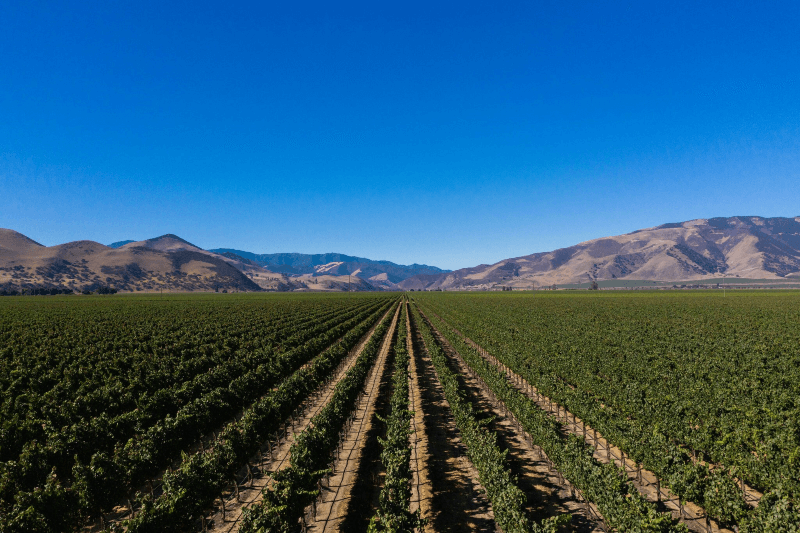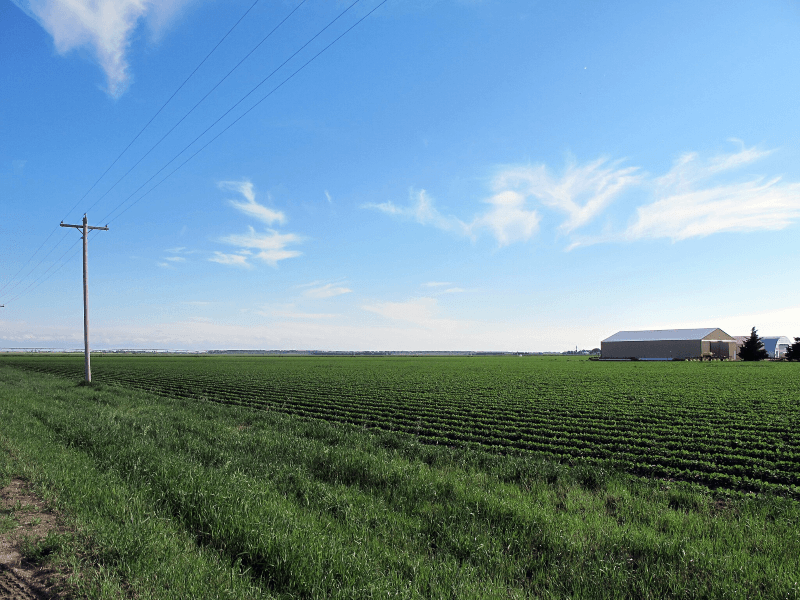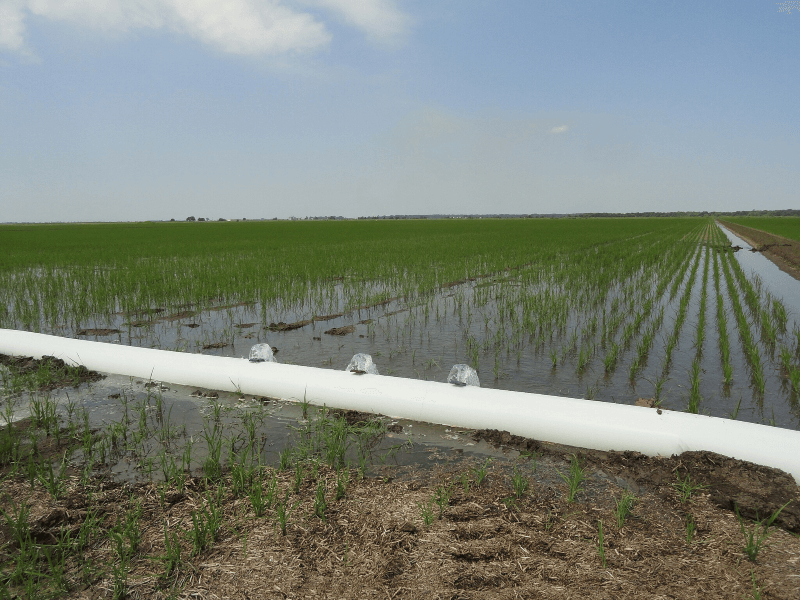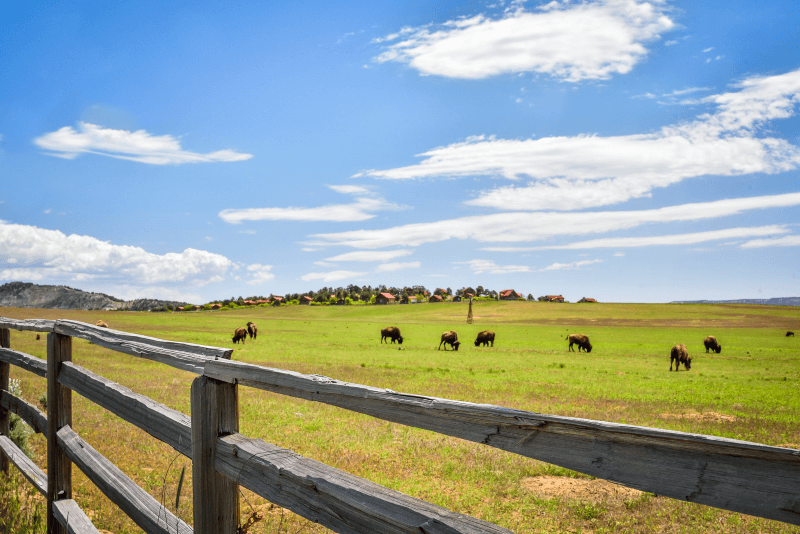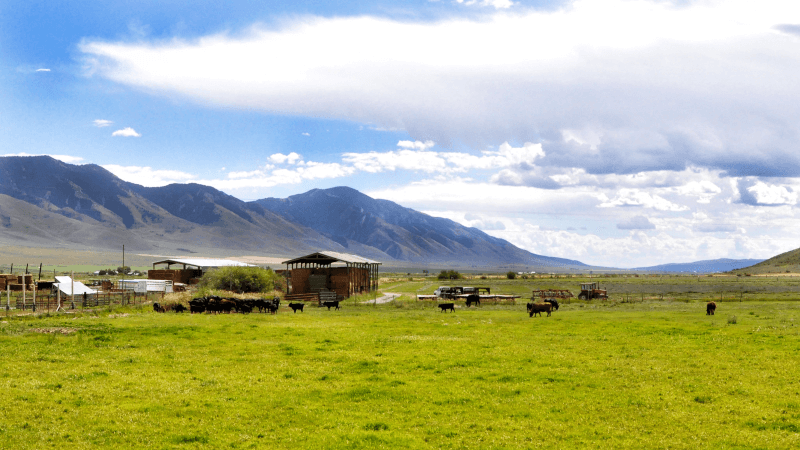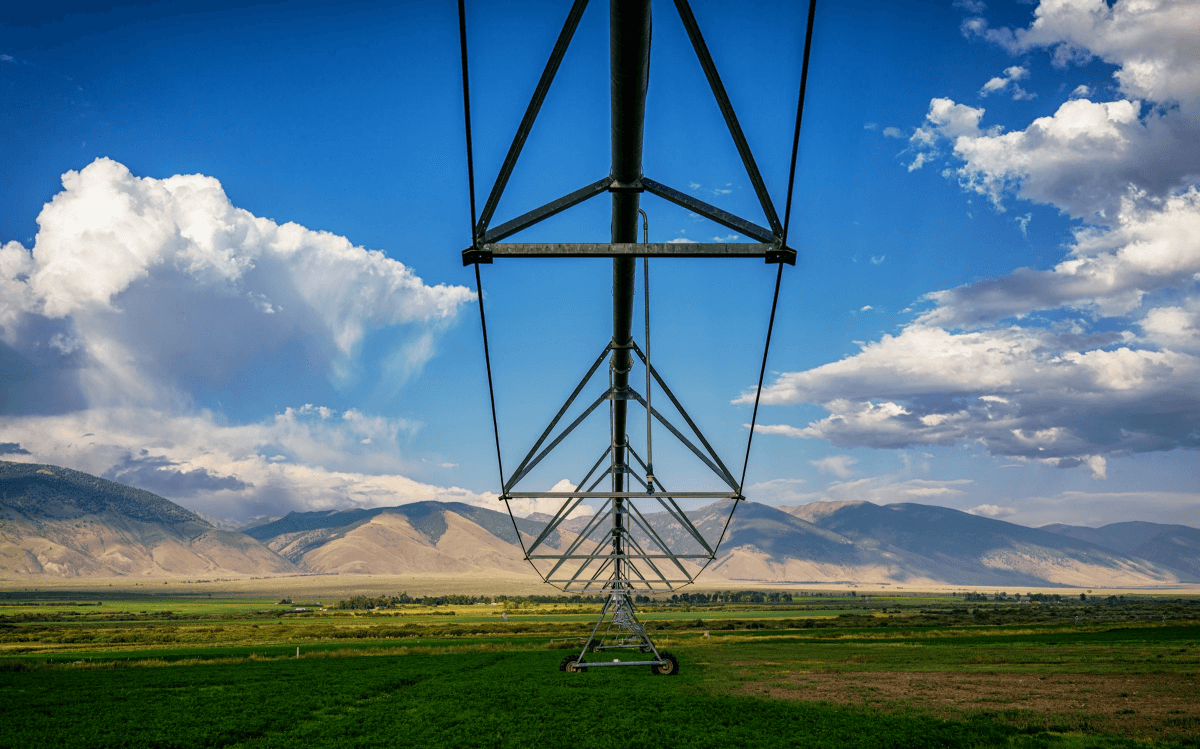
With 42% of annual freshwater withdrawals in the U.S. used for agriculture, where are farms irrigating the most?
To mark National Agriculture Day on March 19, LawnStarter ranked 2024’s States Where Farms Use the Most Water.
We compared all 50 states by the prevalence of irrigated agriculture, including total irrigated farm acres, share of irrigated farmland, and average water use per irrigated acre of farmland. We also considered the share of large irrigated farms (2,000-plus acres).
Explore our ranking below. To learn how we ranked the states, see our methodology.
Why is LawnStarter ranking States Where Farms Use the Most Water? Lawns require lots of water, as do the irrigation systems that grow our crops.
Contents
- State Rankings
- Top 5 Close Up
- Key Insights
- Ask the Experts
- Behind the Ranking
- Final Thoughts: A Cultivation Catch-22
State Rankings
See how each state fared in our ranking:
Top 5 Close Up
Check out the slideshow below for highlights on the 5 states where farms use the most water.
Key Insights
While the U.S. boasts nearly 2 million farms, less than 20% of American croplands have established irrigation systems. The remaining farms rely on rainfall or use dry farming practices.
Arid Western states — like California (No. 1), Arizona (No. 4), and Nevada (No. 10) — use the most water, 2.8–4.7 acre-feet per acre of farmland. According to experts, 1 acre-foot of water can supply 2–3 households in the U.S. for an entire year.
Agricultural production is highly concentrated in California’s Central Valley and in Great Plains states like Nebraska (No. 2), Texas (No. 6), and Iowa (No. 39). Irrigation systems are much less prevalent in Iowa where higher precipitation rates keep most crops hydrated, but climate change is leading more Hawkeye State farmers to consider irrigating.
Irrigation is prevalent along the lower Mississippi River in Arkansas (No. 3), which boasts the highest share of irrigated farms that are 2,000 acres or bigger — 83% — followed by Mississippi (No. 7), Missouri (No. 12), and Louisiana (No. 15), despite their high precipitation rates. Irrigation systems help the region’s expansive soybean, corn, and rice farms achieve consistent crop yields through increasingly hot summers.
Eastern states, such as Vermont (No. 44) and New Hampshire (No. 47), encompass the bottom 10 of our ranking, with West Virginia landing in last place. Farms in this part of the country are smaller and rely on regional precipitation. However, irrigation is becoming more common out east.
Explore more regional insights below.
Ask The Experts
Water conservation and how irrigation depletes our water supply is a concern for many Americans.
We turned to a panel of experts to learn more about water conservation in the agriculture industry. Read their insights below.
- What are 3 of the most water-intensive crops grown in the U.S.?
- What are 3 of the most valuable but least water-intensive crops?
- How can state and local governments balance supporting the needs of farmers while maintaining a steady supply of water for everyone?
- What is 1 sustainable method for reducing water usage (or waste) on farms?
- What U.S.-grown crops are most at risk of inflation due to water shortages, if any?



What are three of the most water-intensive crops grown in the U.S.?
I think almonds and rice usually come out as top water users, but it is important to note that there are comparatively few of these crops grown in the US on an area basis.
Corn also uses a lot of water despite many years of research and breeding to improve drought tolerance. One reason for corn’s water use is the hotter temperatures that go along with the places where corn is grown. The hotter temperatures cause more transpiration of water from the pores of the corn leaves.
What are three of the most valuable but least water-intensive crops?
Some of the beans and peas (like lentils, chickpeas, kidney beans, pintos, pulses) do well as low-water crops. They evolved in locations that were arid or semi-arid, and those characteristics have been retained over time.
How can state and local governments balance supporting the needs of farmers while maintaining a steady supply of water for everyone?
Good question. Monitoring water use is really helpful. A lot of operations use water without quantifying the amount they use. Monitoring is key for management.
Drip irrigation is another good one. Water can be applied at very specific times and places using drip systems.
Incentives for water conservation can help reduce water use, as can community outreach and extension programs, infrastructure upgrades, crop rotation, and greater adoption of drought-tolerant crops. There are actually quite a lot of ways that the issue can be approached.
What is one sustainable method for reducing water usage (or waste) on farms?
As noted above, monitoring water use, changing the daily pattern of irrigation timing (night vs the heat of day where possible and/or appropriate), adjusting irrigation for seasonal weather patterns, and adopting drip irrigation can provide rapid reductions in water use.
Drip irrigation has some additional benefits, such as reducing the amounts of weeds that grow.
What U.S.-grown crops are most at risk of inflation due to water shortages, if any?
Interestingly, it is the same three as for the first question.
Almonds for example are grown in hot, dry California, and they have deep roots, so both the supply and demand of water is set up for high water use. If drought causes water to become more scarce, that can lead to increased prices passed along to consumers.
If drought requires corn production to shift toward greater irrigation use, this additional cost could affect corn futures. And for rice — which as noted is not extensively grown in the US — water shortages would directly impact yields and the amount of land in rice production.

What are three of the most water-intensive crops grown in the U.S.?
1. Alfalfa
2. Cotton
3. Sugarcane
NOTE: This categorization is not based on the amount of water per unit of crop yield.
What are three of the most valuable but least water-intensive crops?
1. Beans
2. Onion
3. Cabbage
NOTE: This categorization is not based on the amount of water per unit of crop yield.
How can state and local governments balance supporting the needs of farmers while maintaining a steady supply of water for everyone?
1. By providing education and incentives to farmers and to the public to reduce waste.
2. Provide incentives and technology development for reuse of water.
What is one sustainable method for reducing water usage (or waste) on farms?
1. A major use of water in agriculture across the U.S. and around the globe is for irrigation of crops. Irrigation systems are generally not as efficient as they should and/or could be. Technology is available to greatly improve irrigiation efficiency and thereby reduce waste.
2. A second method is to encourage on-farm storage of water that can then be used for many farming operations that would otherwise require withdrawals from groundwater or from streams and lakes.
What U.S.-grown crops are most at risk of inflation due to water shortages, if any?
The crops that are now and will continue to be at risk will be ones grown in some of the most arid or semi-arid regions of the country and where water shortages are becoming more prevalent.
The areas with the biggest problems will be in the western states like California, Utah, Texas, Arizona, and others. These states have large amounts of irrigated acreages and the current trends in water supplies are not indicating positive future conditions.
Some of these states depend heavily on the Colorado River for water supplies, while at the same time, many urban areas in the west are also demanding that water.
The Ogalla aquifer which extends from the high plains of Texas into northern Nebraska has been declining the stored groundwater since the 1950’s, and the long-term trend is not encouraging. Other states like New Mexico and California are also experiencing problems with declining water levels in aquifers.
As a result of the declining availability of surface water and groundwater in these western states, there will be more pressure to use the water more efficiently.
Crops like cotton and sorghum will probably need to become more costly to produce as the ready supplies of water dwindle. The cost of water for agricultural production is currently kept very low, but with decreasing supplies and increasing demand for other uses (urban, suburban, etc.), the cost could potentially begin to rise and this would be impossible to manage without increases in prices.
Behind the Ranking
First, we determined the factors (metrics) that are most relevant to rank the States Where Farms Use the Most Water. We then assigned a weight to each factor based on its importance and grouped those factors into 2 categories: Irrigated Farm Size and Irrigation Intensity. The categories, factors, and their weights are listed in the table below.
For each of the 50 states, we then gathered data on each factor from the sources listed below the table.
Finally, we calculated scores (out of 100 points) for each state to determine its rank in each factor, each category, and overall. A state’s Overall Score is the average of its scores across all factors and categories. The highest Overall Score ranked “Most Irrigated” (No. 1) and the lowest “Least Irrigated” (No. 50). Note: The “Least Irrigated” among individual factors may not be No. 50 due to ties.
Source: U.S. Department of Agriculture
Final Thoughts: A Cultivation Catch-22
To match population growth, global agricultural production must expand by around 70% by 2050, according to experts. Design innovations may also increase crop demand to meet future need for biofuels and bioplastics.
The U.S. is a major player in the global agricultural industry. However, extreme weather events like droughts, tornadoes, and hurricanes can be disastrous to the national food supply.
Unsustainable water practices are depleting aquifers across the country, like the Ogallala Aquifer, America’s largest aquifer, and the Colorado River Basin, serving over 40 million people.
As precipitation rates become unpredictable and dryland farming more challenging, many farmers are installing irrigation systems to exercise more control over their crop growth and yield in the face of climate change.
Therein lies the catch: Drought is causing farmers to pump more water, which is further aggravating drought conditions.
As policymakers juggle among issues of water rights, unregulated pumping, and international investors buying large swaths of U.S. farmland, the federal government spends over $30 billion annually on farm subsidies to support farmers through inflation and environmental challenges. The Conservation Reserve Program encourages water conservation by paying farmers not to farm to help replenish regional groundwater levels.
Some irrigation methods are more sustainable than others, but upgrading irrigation systems to the most efficient methods can be costly to farmers. Research shows advancements in irrigation technology and switching to more sustainable alternatives to water-intensive crops can help farmers reduce water usage without reducing profits.
Want to reduce irrigation costs for your lawn and landscape? Hire a local LawnStarter crew to install efficient irrigation systems or xeriscape your property.
Media Resources
Quotes from LawnStarter Editor-in-Chief Jeff Herman:
- Despite being a wet state with ample rainfall, Florida (No. 19) finishes in the high water-use half of our ranking. The Sunshine State produces many citrus fruits and over half of the nation’s fresh tomatoes, which are water-intensive crops.
- Our 2nd-smallest state by area, Delaware (No. 24), lands ahead of much larger states like Alabama (No. 35) and North Carolina (No. 46) in total irrigated farm acres and share of irrigated farmland. The Blue Hen State is home to the water-intensive broiler chicken industry, and Sussex County claims the most chickens per square mile in the U.S.
- 10 Western states — such as Washington (No. 8), Idaho (No. 5), and Colorado (No. 9) — have the highest Irrigation Intensity, using over 1.5 acre-feet per acre of farmland.
- Alaska (No. 37) claims the fewest irrigated acres of farmland but has a higher share of irrigated farmland than 23 states, such as Oklahoma (No. 21), Colorado (No. 9), and Nevada (No. 10).
- Hawaii (No. 30) has the lowest share of irrigated farmland, 3%, but the state’s irrigated farms use 1.4 acre-feet per acre on average — the 11th-highest Irrigation Intensity in our ranking.
• High-resolution images of states
Main Photo Credit: Vidar Nordli-Mathisen / Unsplash / Unsplash License
